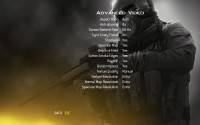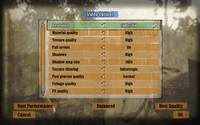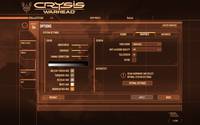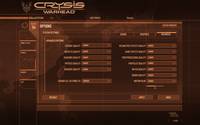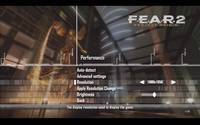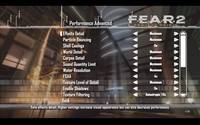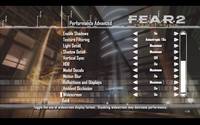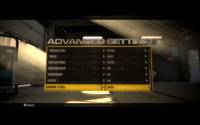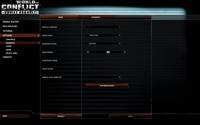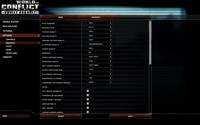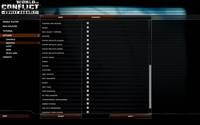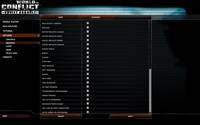- Qualcomm Launches Snapdragon 4 Gen 2 Mobile Platform
- AMD Launches Ryzen PRO 7000 Series Mobile & Desktop Platform
- Intel Launches Sleek Single-Slot Arc Pro A60 Workstation Graphics Card
- NVIDIA Announces Latest Ada Lovelace Additions: GeForce RTX 4060 Ti & RTX 4060
- Maxon Redshift With AMD Radeon GPU Rendering Support Now Available
ATI’s Eyefinity: 18 Games Benched on 3 and 6 Displays
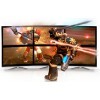
When AMD launched its ATI Eyefinity technology, it helped redefine high-end gaming, and effectively made 2560×1600 look like child’s play. In this article, we put the technology to a good test across 18 different games and on both 3×1 (5760×1080) and 3×2 (5760×2160) display configurations to see just how worthy Eyefinity is.
Page 2 – Test System & Methodology
At Techgage, we strive to make sure our results are as accurate as possible. Our testing is rigorous and time-consuming, but we feel the effort is worth it. In an attempt to leave no question unanswered, this page contains not only our testbed specifications, but also a fully-detailed look at how we conduct our testing. For an exhaustive look at our methodologies, even down to the Windows Vista installation, please refer to this article.
Test Machine
The below table lists our testing machine’s hardware, which remains unchanged throughout all GPU testing, minus the graphics card. Each card used for comparison is also listed here, along with the driver version used. Each one of the URLs in this table can be clicked to view the respective review of that product, or if a review doesn’t exist, it will bring you to the product on the manufacturer’s website.
|
Component
|
Model
|
| Processor |
Intel Core i7-975 Extreme Edition – Quad-Core, 3.33GHz, 1.33v
|
| Motherboard |
Gigabyte GA-EX58-EXTREME – X58-based, F7 BIOS (05/11/09)
|
| Memory |
Corsair DOMINATOR – DDR3-1333 7-7-7-24-1T, 1.60
|
| ATI Graphics |
Radeon HD 5870 2GB Eyefinity 6 (Sapphire) – Catalyst 10.3b Radeon HD 5870 1GB (Reference) – Catalyst 10.3 Radeon HD 5850 1GB (Sapphire Toxic) – Catalyst 10.2 Radeon HD 5850 1GB (ASUS) – Catalyst 9.10 Radeon HD 5830 1GB (Reference) – Beta Catalyst (02/10/10) Radeon HD 5770 1GB (Reference) – Beta Catalyst (10/06/09) Radeon HD 5750 1GB (Sapphire) – Catalyst 9.11 Radeon HD 5670 512MB (Reference) – Beta Catalyst (12/16/09) Radeon HD 5570 1GB (Sapphire) – Beta Catalyst (12/11/09) Radeon HD 5550 1GB (Sapphire) – Catalyst 10.4 |
| NVIDIA Graphics |
GeForce GTX 480 1536MB (Reference) – GeForce 197.17 GeForce GTX 295 1792MB (Reference) – GeForce 186.18 GeForce GTX 285 1GB (EVGA) – GeForce 186.18 GeForce GTX 275 896MB (Reference) – GeForce 186.18 GeForce GTX 260 896MB (XFX) – GeForce 186.18 GeForce GTS 250 1GB (EVGA) – GeForce 186.18 GeForce GT 240 512MB (ASUS) – GeForce 196.21 |
| Audio |
On-Board Audio
|
| Storage | |
| Power Supply | |
| Chassis | |
| Display | |
| Cooling | |
| Et cetera |
When preparing our testbeds for any type of performance testing, we follow these guidelines:
- General Guidelines
- No power-saving options are enabled in the motherboard’s BIOS.
- Internet is disabled.
- No Virus Scanner or Firewall is installed.
- The OS is kept clean; no scrap files are left in between runs.
- Hard drives affected are defragged with PerfectDisk 10 prior to a fresh benchmarking run.
- Machine has proper airflow and the room temperature is 80°F (27°C) or less.
To aide with the goal of keeping accurate and repeatable results, we alter certain services in Windows Vista from starting up at boot. This is due to the fact that these services have the tendency to start up in the background without notice, potentially causing slightly inaccurate results. Disabling “Windows Search” turns off the OS’ indexing which can at times utilize the hard drive and memory more than we’d like.
- Services Disabled Prior to Benchmarking
- PerfectDisk 10
- Windows Defender
- Windows Error Reporting Service
- Windows Event Log
- Windows Firewall
- Windows Search
- Windows Update
For more robust information on how we tweak Windows, please refer once again to this article.
Game Titles
Due to the special nature of this article, performance results are going to be delivered a little bit differently than usual. Because we already have full-fledged pages prepared for the six games listed below, we have kept them in-tact and also include a single non-Eyefinity graph for the 2560×1600 resolution from cards we’ve tested previously, so that you can gauge the performance for both configurations.
For this article, we have tested out Eyefinity with 11 games (and also Unigine’s Heaven), and for the sake of space and time, we’re not going to delve too deep into the in-game configurations we used for each one, but will be more specific for our “Best Playable” tables. Below, the screenshots are representative of the settings we used for our Eyefinity testing in each title, aside from the resolution of course.
In addition to benchmarking our fleet of games at 5760×2160, we’ve also benched them at 5760×1080, since we believe that to be a much more realistic configuration for most people. As always, we don’t utilize timedemos, so all of our results are gained via manual playthroughs. The exception is Unigine’s Heaven benchmark, which we’ve included just for the sake of interest. Futuremark’s 3DMark Vantage could not be run, as the application’s detected max resolution was 1920×1080, not 5760×2160.
Lastly, for all of the games we’ve tested, we’ve included screenshots for both resolutions used so as to provide a real look at just how the games looks at such huge resolutions. Please note that as a result of these resolutions, the images are large, ranging in byte sizes between 1MB – 6MB.
Call of Duty: Modern Warfare 2
Call of Juarez: Bound in Blood
Crysis Warhead
F.E.A.R. 2: Project Origin
Race Driver: GRID
World in Conflict: Soviet Assault
Support our efforts! With ad revenue at an all-time low for written websites, we're relying more than ever on reader support to help us continue putting so much effort into this type of content. You can support us by becoming a Patron, or by using our Amazon shopping affiliate links listed through our articles. Thanks for your support!




